Shrikes have been called “butcher birds” for their habit of impaling their prey (insects, small rodents, reptiles or birds) on thorns, barbed wire or other sharp projections. They do it for several reasons. It helps them to tear the flesh into bite sized pieces, they use it as a method of caching (storing) their food and it helps them to survive eating the toxic lubber grasshopper because the toxins within the insect degrade to harmless substances within a couple of days. I had never seen or photographed this behavior, or evidence of it, until this summer when I did both several times.
In the first three photos below, this juvenile Loggerhead Shrike is practicing this instinctive behavior but the bird apparently isn’t very skilled at it yet as it had some difficulty impaling the dragonfly on the short thorn just below the insect. In the first image the bird seems to be trying to decide which of several thorns to use for this grisly task.
Preparing to impale the dragonfly
Impaling the dragonfly on a thorn
The dragonfly has been impaled, though a little off-center.
In this case the bird didn’t wait long to begin eating the prey. Here it has torn off the head and the front part of the abdomen with one pair of wings attached and is swallowing them. As you can see, the rest of the insect is still impaled on the thorn. Soon after this shot was taken the shrike removed the rest of the dragonfly from the thorn, flew with it to a different perch and then swallowed the rest of its meal.
Shrikes also kill and eat small rodents. Several times recently I observed them attempting to catch voles (small rodents resembling mice). In the photos below a Loggerhead Shrike has cached a vole on a thorn and has returned to it for a meal. The images are of very poor quality as the vole had been cached within a dense thicket with poor light and I had a difficult time focusing on the shrike and prey through all the branches. In this first photo below, the impaled vole is at top with one foot sticking up and you can make out the out of focus eye of the shrike and it’s toes grasping the branch at bottom. It has torn off a furry piece of the vole which is in its beak to the right.
Eyeing the prize
In the image below, the very blurry remnants of the vole are to the upper left and the shrike is about to leave with a tasty morsel.
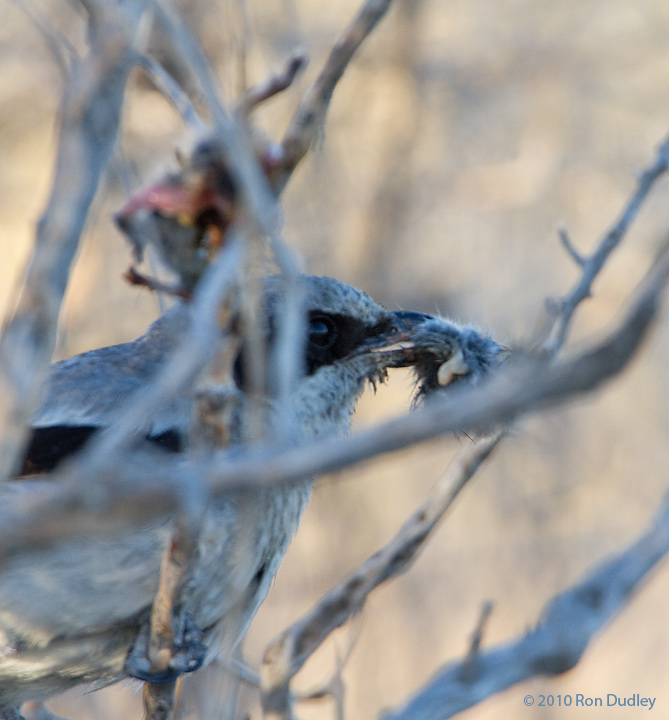 Preparing to leave with a meal
Preparing to leave with a meal
The same shrike after eating the vole, with evidence of its messy meal on its face
I’m hoping to get more documentation of this fascinating behavior in the future but it will probably have to wait until next year because most of these birds have now dispersed after the nesting season and they’re much more difficult to find and approach.
Ron


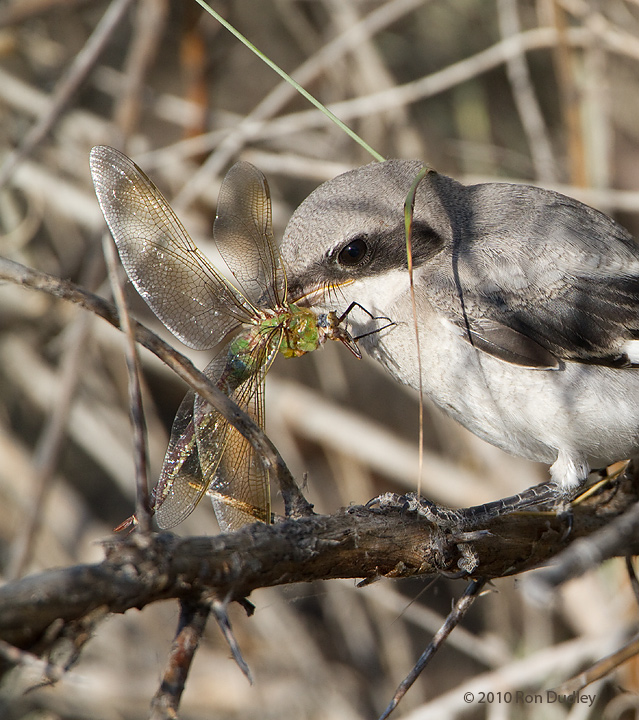
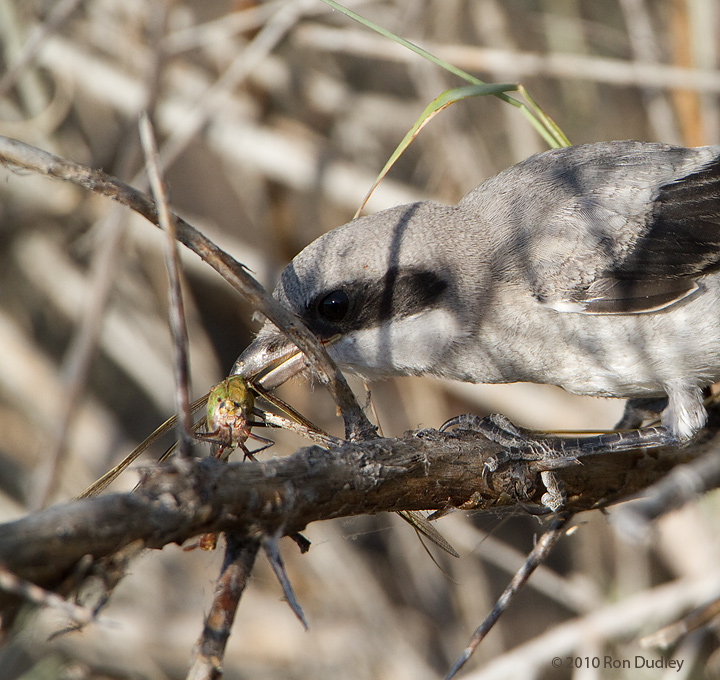
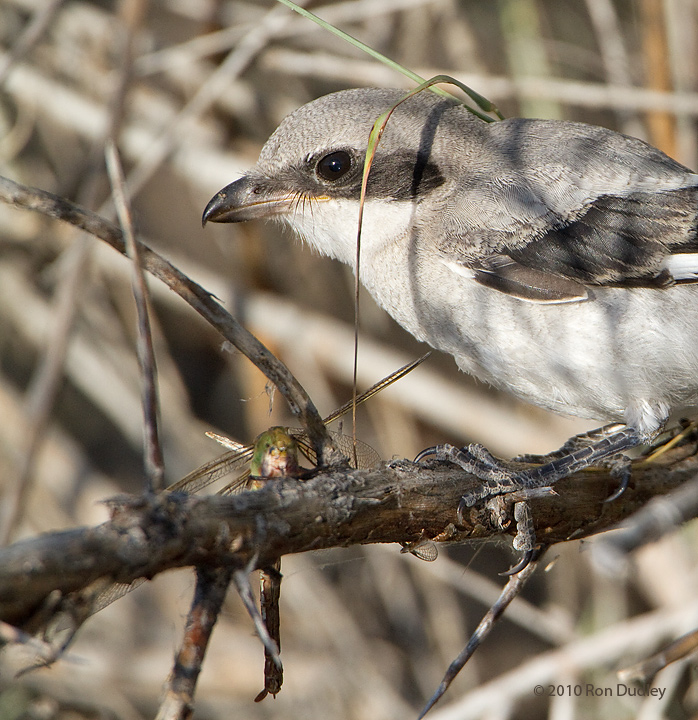
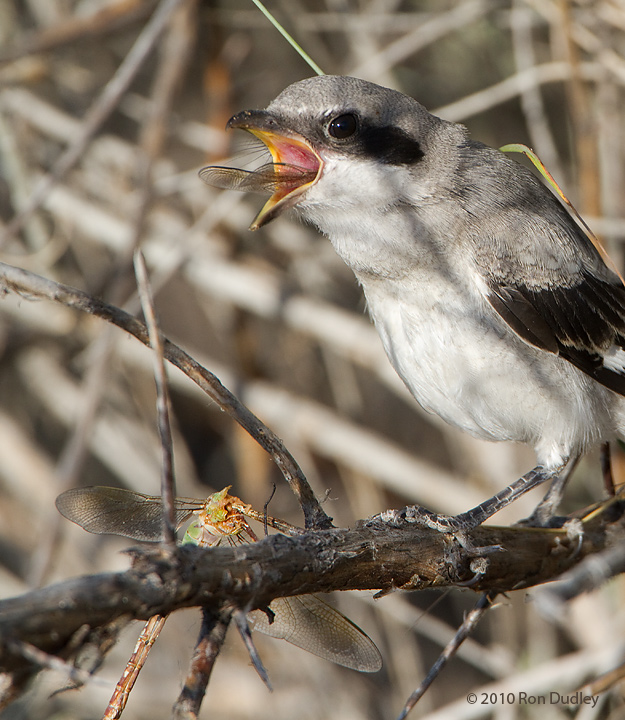


Nice photos. Thank you very much for the education.
Welcome to the world of blogging. I’m glad to see the direction you’ve picked for this blog and look forward to your posts.
You know I have a special fondness for shrikes and I never take a sighting of one for granted. Over the 30 or so years I’ve been viewing them I’ve yet to find a nest or see this behavior.